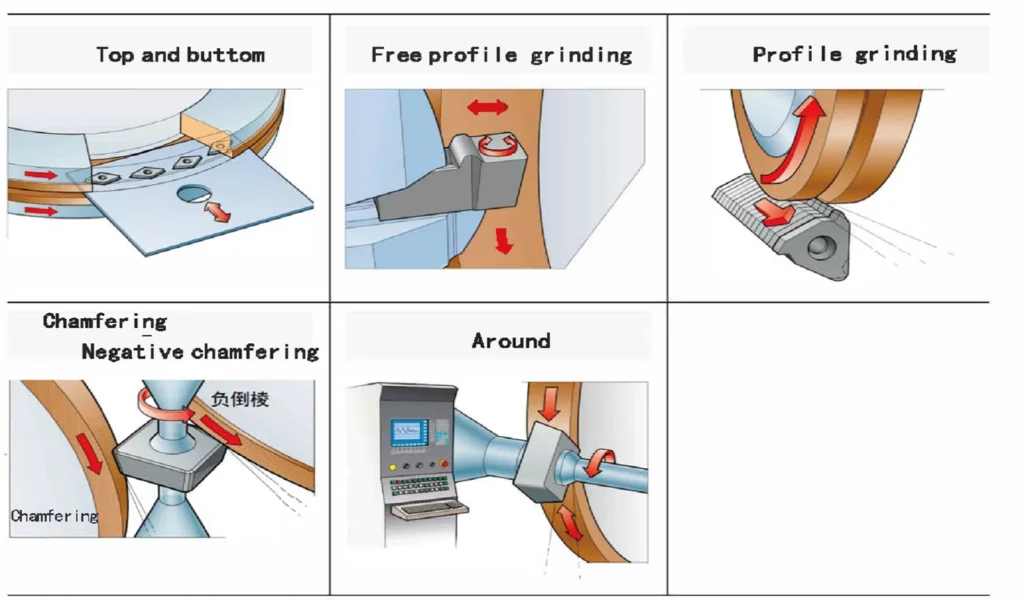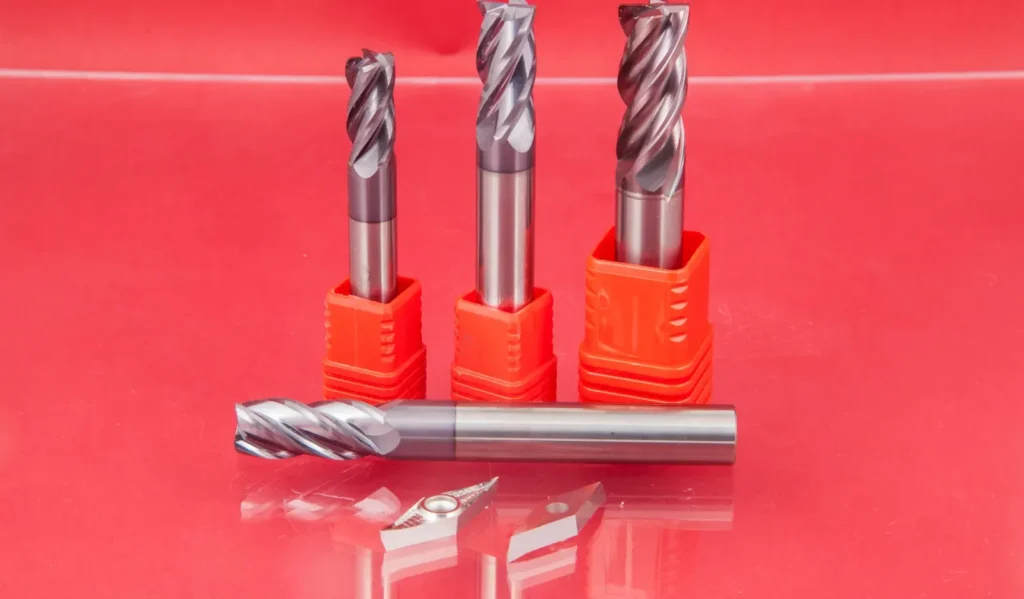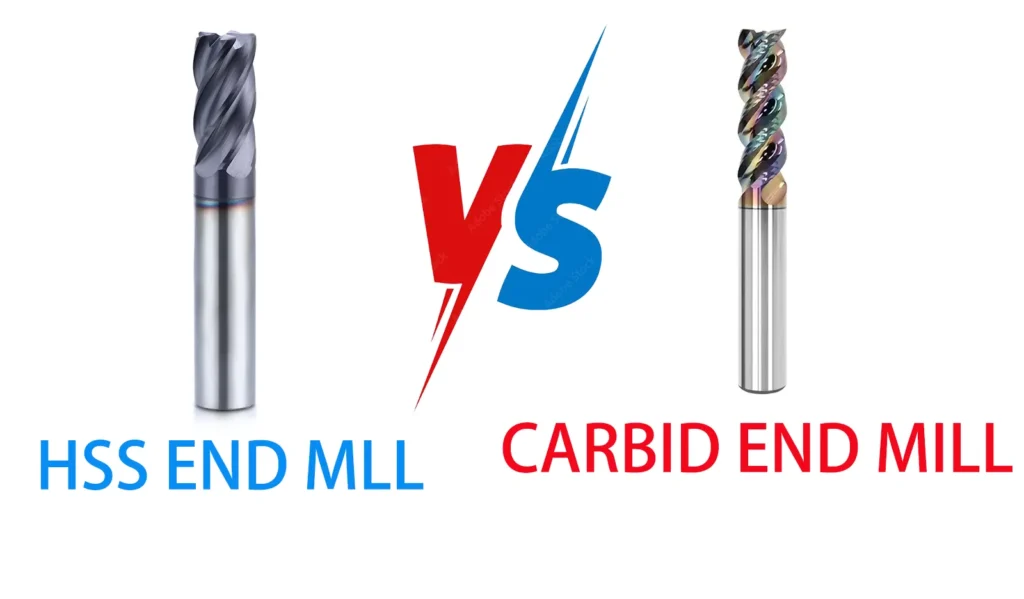Carbide end mills are a cutting tool used in modern manufacturing, and their durability and strength make them a popular choice for machining a variety of materials. But how are carbide end mills made? In this article, we’ll look at the process of manufacturing carbide end mills.

Introduction of endmills
Explanation of Carbide End Mills
Carbide end mills are cutting tools that are widely used in manufacturing for machining operations such as milling, drilling and boring in a variety of materials including metals, wood, plastics and composites. They are made from a combination of tungsten carbide and cobalt and are very hard and wear-resistant, capable of withstanding high temperatures and high-speed machining operations.
Carbide end mills are available in a variety of shapes and sizes, including square-ended, ball-ended, fillet, and roughing mills. They are available with several cutting edges or tooth counts for efficient material removal and a smooth surface. The number of teeth can vary from two to eight, depending on the specific application.
Carbide end mills are known for their precision and accuracy, which is important for achieving tight tolerances and producing high-quality parts. They are also capable of withstanding high loads and forces, making them suitable for heavy machining operations.
Overall, carbide end mills are a key component in modern manufacturing and are used in a variety of industries including aerospace, automotive, medical, and mechanical engineering.
Brief description of end mills made
Powder preparation: The first step in the manufacturing process is the preparation of the raw materials. Tungsten carbide powder and cobalt powder are mixed together in the desired proportions and then compressed into a compact.
Sintering: The compacted material is then subjected to a high-temperature sintering process, where it is heated in a furnace until it reaches a temperature of around 1,500 to 1,600°C. The heat causes the powder particles to fuse together, forming a solid piece of carbide.
Cutting tool geometry: Once the carbide blank is formed, it is ground into the shape and size of the desired end mill. This involves using diamond grinding wheels to create the cutting edges, flutes, and other features of the tool.
Coating: To improve the performance and lifespan of the end mill, it is often coated with a thin layer of material, such as titanium nitride or diamond-like carbon. This coating improves the tool’s wear resistance, reduces friction, and enhances its cutting ability.
Quality control: Throughout the manufacturing process, the end mill is inspected and tested to ensure that it meets the required specifications. This includes checking the dimensions, hardness, and other critical parameters.
Powder Production of endmills
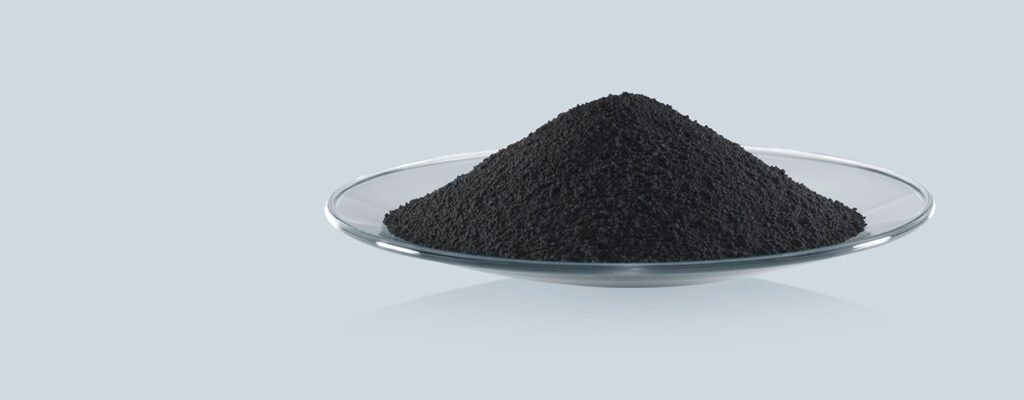
Tungsten carbide powder and its properties
Tungsten carbide powder is a fine granular substance composed of tungsten carbide grains. Tungsten carbide is a compound formed by the chemical combination of tungsten and carbon elements and has the following properties:
High hardness: Tungsten carbide is a very hard material, with a hardness close to that of diamond. This makes tungsten carbide powder very useful in the manufacture of high-hardness materials such as cemented carbide.
High melting point: Tungsten carbide has a very high melting point of 2,870°C. This allows tungsten carbide powder to remain stable at high temperatures and not easily melt or lose its properties.
Wear resistance: Due to the hardness and high melting point of tungsten carbide, it has extremely high wear resistance. This makes tungsten carbide powder suitable for manufacturing highly wear-resistant materials, such as cemented carbide, ceramics and metal-ceramic composites.
High Density: Tungsten carbide powder has a very high density of about 15 g/cm3. This makes it very useful in the manufacture of high-density materials.
Good electrical conductivity: Tungsten carbide has good electrical conductivity, which makes it very useful in the manufacture of electronic components and conductive materials.
Overall, tungsten carbide powder is a very useful material, especially for manufacturing high hardness, high wear resistance and high-density materials. Its properties make it useful in many different applications, including the manufacture of cemented carbide, ceramics, metal-ceramic composites, electronic components, and electrically conductive materials
Mixing tungsten carbide powder with a binder to form a paste
The process of mixing tungsten carbide powder with a binder to form a paste is called molding. This process is one of the important steps in the manufacture of carbide tools.
The purpose of forming is to mix tungsten carbide powder and binder into a blank with a certain shape and size for subsequent machining and sintering. Two molding methods are commonly used: press molding and injection molding.
Press molding involves mixing tungsten carbide powder and binder, placing them in a mold, and then compressing them under high pressure into a blank of the desired shape. This process usually requires several hundred to several thousand tons of pressure to ensure that the blank has sufficient density and strength.
Injection molding involves mixing tungsten carbide powder and binder into a paste and then injecting it into a mold through a syringe. This process is typically used to make smaller and more complex carbide tools.
Whether compression molding or injection molding is used, the formed blanks need to undergo some drying and curing process for subsequent sintering. During this process, the binder reacts chemically and forms a paste with a certain strength.
Compacting of carbide endmills
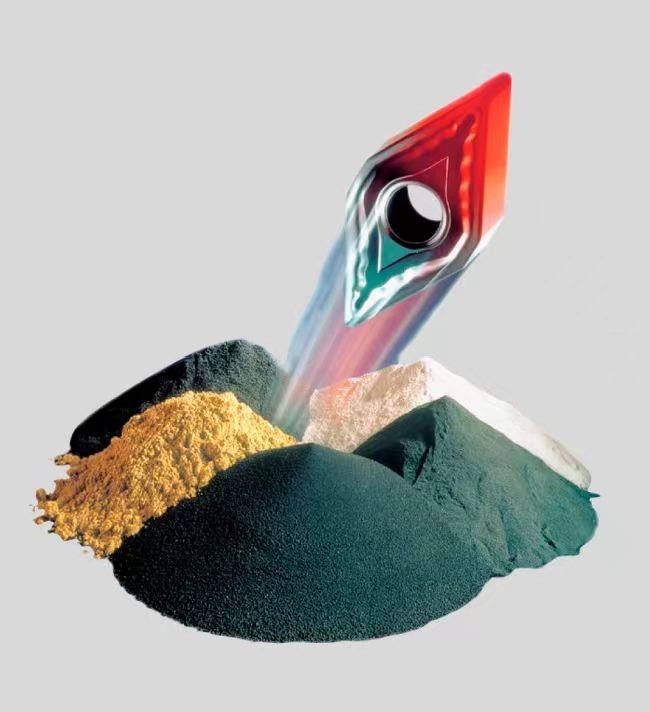
The process of using a hydraulic press to compress the paste into a roughly shaped preform of the tool is called pressing. This process is one of the important steps in the manufacture of carbide tools.
The purpose of pressing is to compress the formed blank into a roughly shaped perform with the desired shape and size. This process typically requires hundreds to thousands of tons of pressure and uses special dies and tools to ensure that the preforms are of sufficient density and strength.
During the pressing process, the binder reacts chemically and binds the tungsten carbide powder tightly together. At the same time, some voids and pores are formed in the preforms, which are important factors for subsequent processing and sintering.
After pressing, the roughly shaped preforms require some machining and trimming for subsequent sintering and coating. This usually includes steps such as cutting, grinding and polishing in order to obtain the exact shape and size. Some special machining and finishing are also performed for different tool types to improve their performance and life.
Sintering of carbide endmills
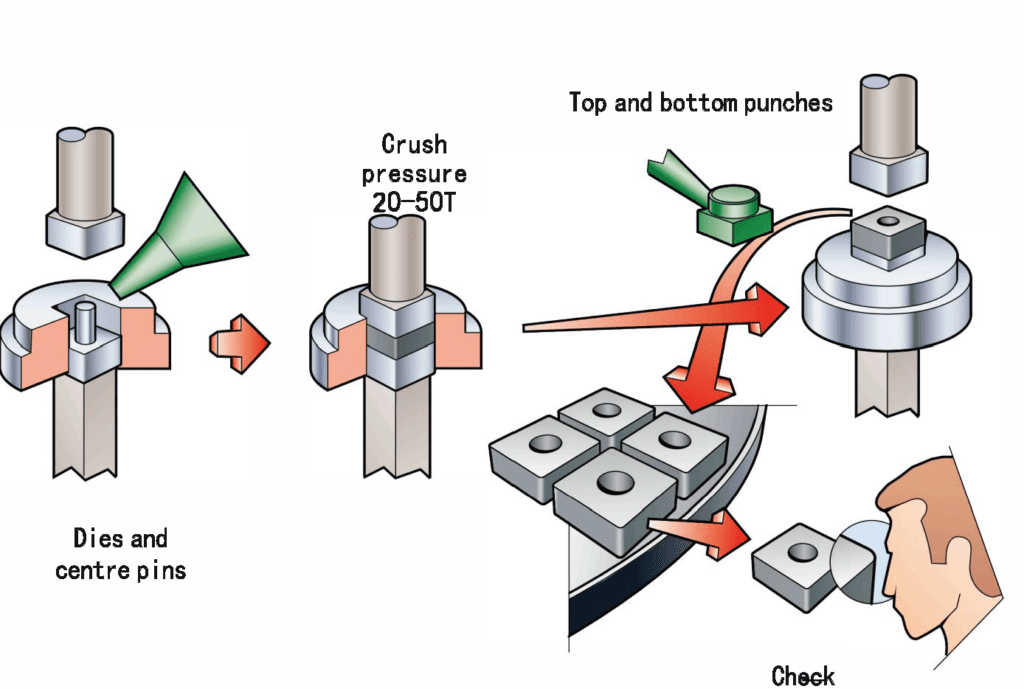
Sintering is an important step in the carbide manufacturing process where preforms are heated to high temperatures and sintered into carbide tools of a certain density and strength.
In the sintering process, the preforms are first placed in a sintering furnace and heated to a high temperature, typically around 1,400°C to 1,500°C. At high temperatures, the binder begins to decompose and evaporate, while the bonding between the tungsten carbide powders increases, forming a tighter grain structure.
During the sintering process, some important chemical reactions also occur, such as the mutual reaction between tungsten carbide and cobalt, producing a more uniform carbide microstructure and improving the performance and life of the carbide.
After sintering, the density and strength of the carbide tool are significantly increased, along with higher hardness, wear resistance and corrosion resistance. Depending on the application requirements, some subsequent machining and coating treatments are also applied to improve the performance and life of the carbide tool.
Grinding of carbide endmills

Grinding the sintered carbide material into the final shape and size of the carbide tool is one of the last steps in carbide manufacturing.
In this step, the final shape and size of the carbide tool need to be determined first, and some special machining and processing need to be performed according to its application. This usually includes process steps such as cutting, grinding, and polishing in order to obtain the final carbide tool.
Cutting is the process of cutting the sintered carbide material into a block of the desired shape and size. This usually involves the use of equipment such as high-speed drills, EDM cutters, etc.
Grinding is the process of grinding the carbide material into the desired shape and size. This is usually done using equipment such as high-speed grinding heads, grinding wheels, etc. in order to obtain a more precise and smooth surface.
Polishing is the process of polishing and grinding the surface of the carbide tool in order to obtain a smoother and more beautiful surface.
With these machining and processing steps, the sintered carbide material can be machined into carbide tools of the desired shape and size, with improved performance and life for different applications.
Coating of carbide endmills
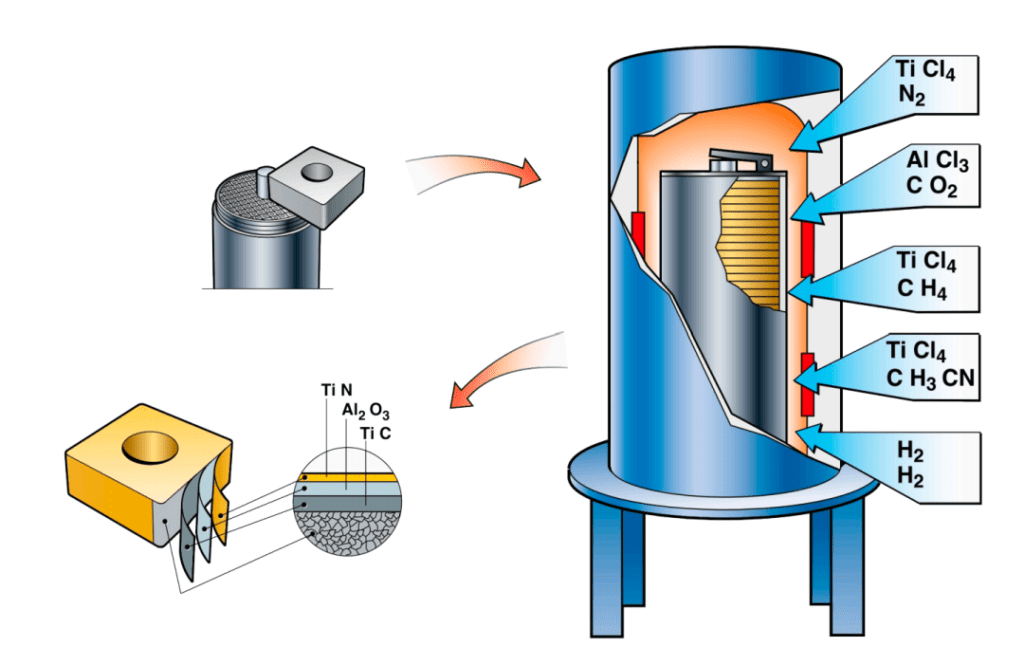
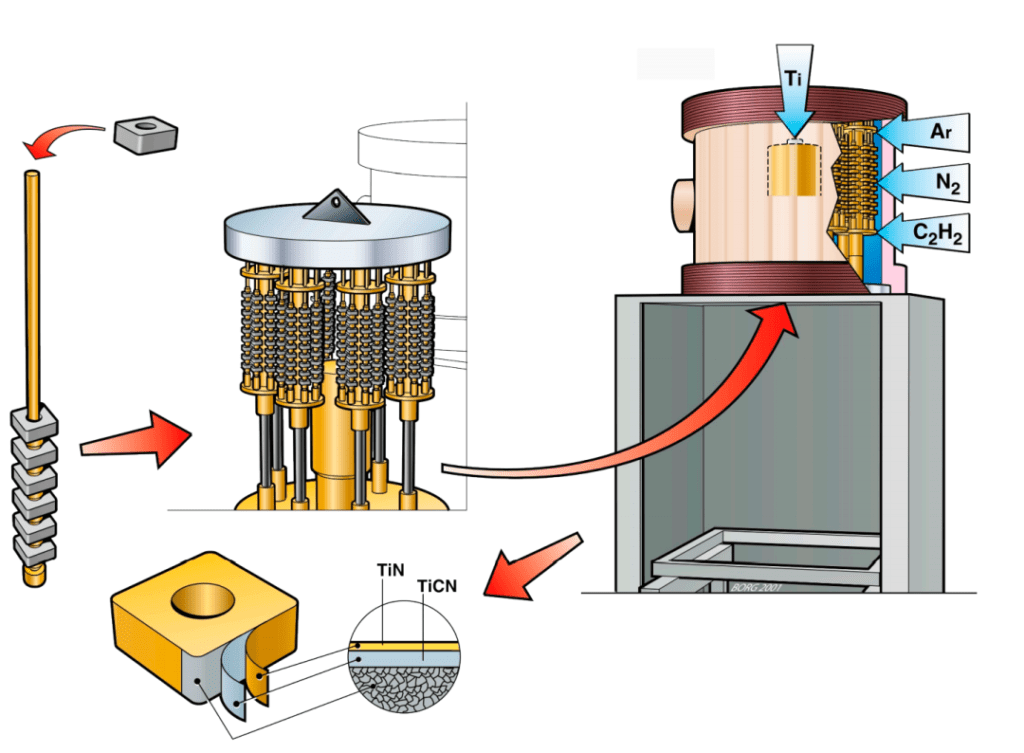
End mills are commonly used cutting tool, which is usually used to process metal materials. In order to improve the wear resistance, high-temperature resistance, and cutting resistance of end mills, it is often necessary to coat their surfaces.
The coating of end mills is usually performed by Physical Vapor Deposition (PVD) or Chemical Vapor Deposition (CVD) technologies.
Commonly used coatings for end mills are as follows:
Titanium aluminum nitrogen (TiAlN) coating: This is a commonly used PVD coating with good wear resistance and heat resistance, which can improve the cutting speed and life of end mills.
AlTiN coating: This is also a common PVD coating with higher hardness and better wear resistance, which can improve the cutting speed and life of end mills.
Zirconium oxide (ZrO2) coating: This is a common CVD coating with good heat resistance and wear resistance, which can improve the cutting speed and life of end mills.
Molybdenum aluminum nitrogen (MoAlN) coating: This is a relatively new PVD coating with better heat resistance and cutting resistance, which can be used for machining difficult-to-machine materials.
Through the coating treatment, it can greatly improve the performance and life of end mills, reduce machining costs and improve production efficiency.
To sum up, end mills manufacturing is actually a very complicated process, and every step is important. If a certain part is not well controlled, then the manufactured end mill will not achieve the effect we want for the machined part.
I hope this article can be helpful to you.
Extra knowledge
Top 10 tungsten carbide producers in the world
- China Tungsten Group Limited
- Sandvik AB
- Kennametal Inc.
- Mitsubishi Materials Corporation
- Ceratizit S.A.
- Sumitomo Electric Industries, Ltd.
- H.C. Starck GmbH
- JX Nippon Mining & Metals Corporation
- Xiamen Tungsten Co., Ltd.
- Buffalo Tungsten Inc.
top 10 end mills manufacturers in the world
- Sandvik Coromant
- ISCAR Ltd.
- Kennametal Inc.
- Guhring KG
- OSG Corporation
- YG-1 Co., Ltd.
- Walter AG
- Kyocera Corporation
- Mitsubishi Materials Corporation
- Tungaloy Corporation
These are companies that have a high presence and market share in the field of end mills, and their products are of a high quality and technical level. These companies are committed to driving innovation and progress in end mills technology and are playing an important role in their respective fields.

